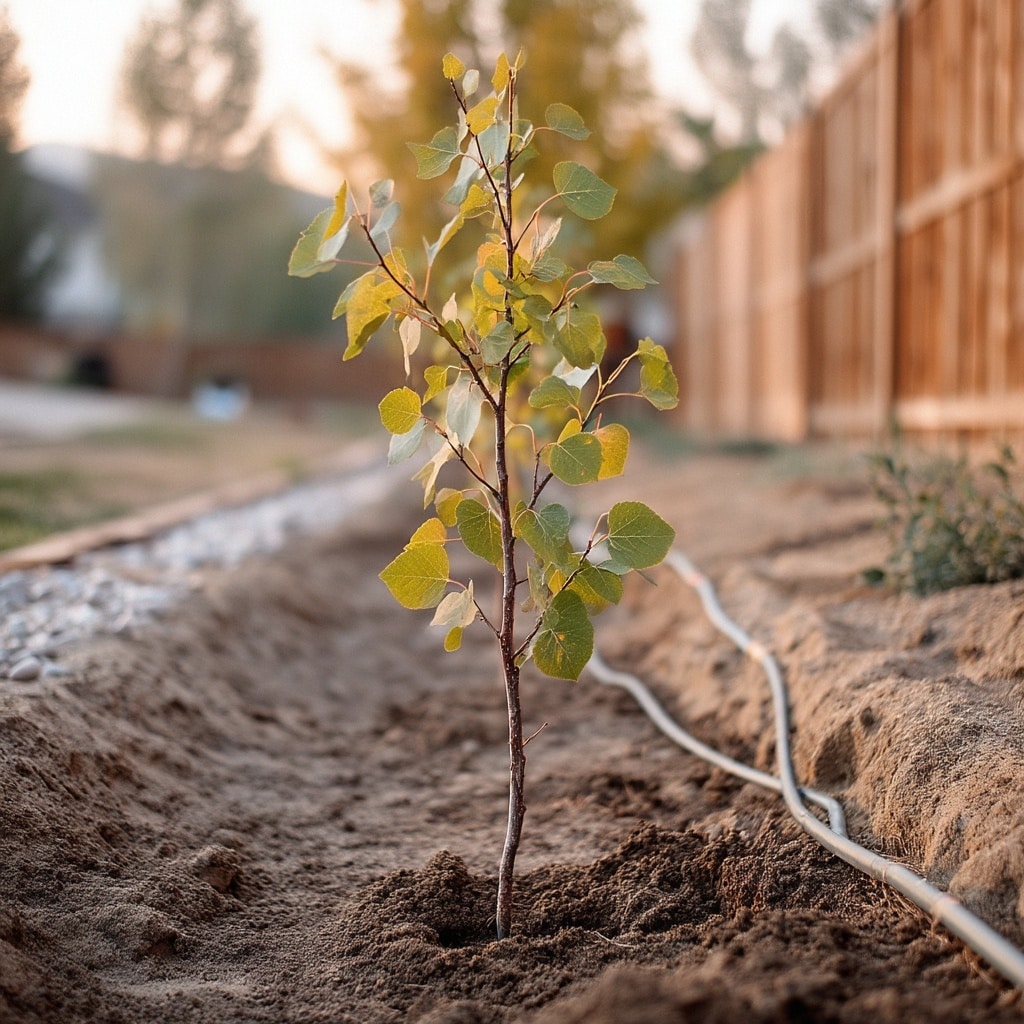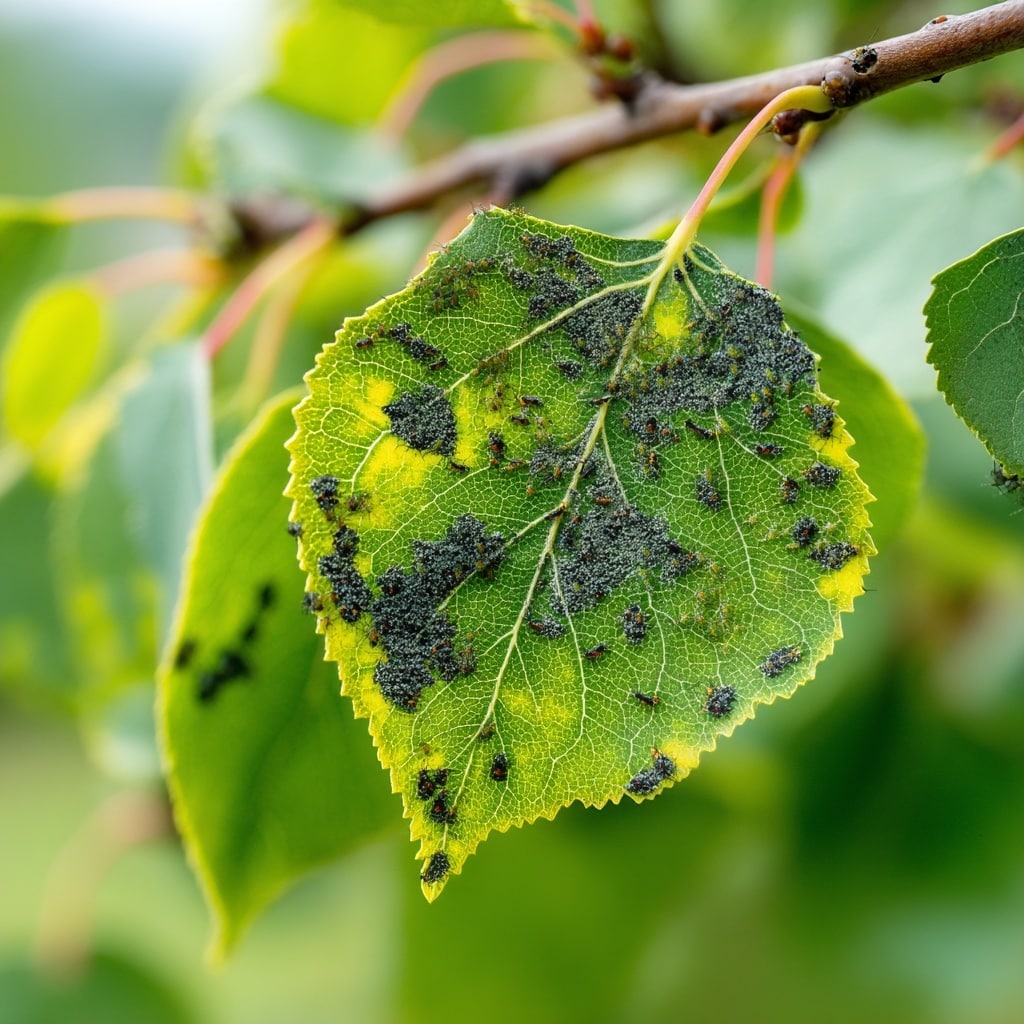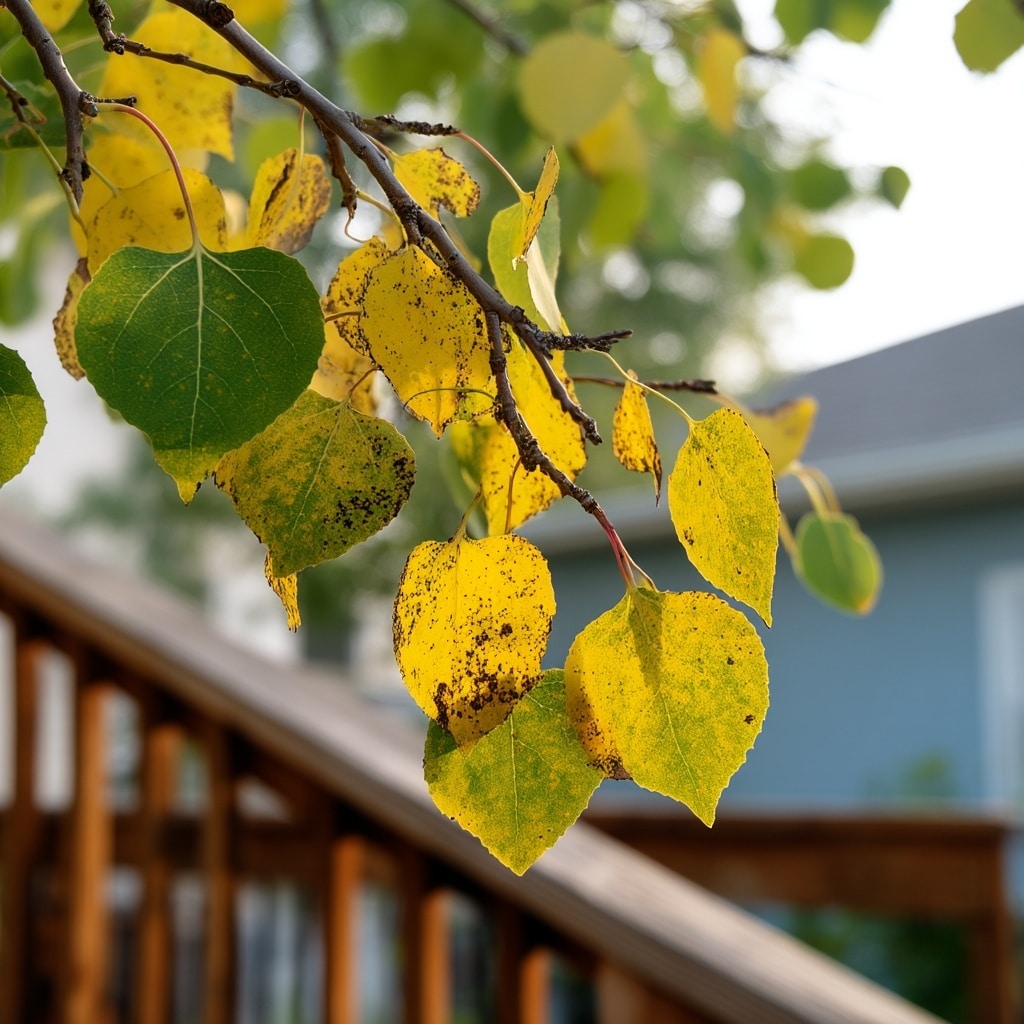Aspen trees are a cherished symbol of Colorado’s wild beauty, often admired for their shimmering leaves, striking white bark, and vibrant fall color. But while they thrive in their native mountain habitats, growing aspen trees in urban environments like Denver presents a unique set of challenges. Heavy clay soils, intense summer heat, and limited elevation mimicry can all take a toll on their health. In this guide, you’ll find practical, expert-backed advice to help your aspens thrive in the city—covering everything from soil prep and pest control to pruning and long-term care strategies.
Table of Contents
Aspen Trees in Urban Landscapes
Aspen trees are deeply rooted in Colorado’s identity—both figuratively and literally. They’re one of the most widely distributed tree species in the state, flourishing naturally at higher elevations where the soil is loose, the air is cool, and moisture is consistent. But when these mountain natives are transplanted into urban areas like Denver, their needs often clash with city conditions.
Denver’s compact clay soils and lowland heat aren’t ideal for aspens. These conditions limit root oxygen and drainage, both critical for healthy growth. Despite this, homeowners continue to plant aspen trees for their year-round appeal: lush green leaves in summer, golden canopies in autumn, and iconic white bark that stands out against the winter snow.
Yet, without proper care and environmental adjustments, aspens in the city may struggle, showing signs of disease, poor vigor, or premature decline. Understanding their natural habitat is key to adapting your landscape to support their needs.
How to Create Ideal Conditions for Aspen Trees

To keep aspen trees healthy in city settings, the goal is to replicate their native mountain environment as closely as possible. That means improving soil structure, ensuring proper drainage, and maintaining consistent moisture levels.
Start with a Raised Berm
Since Denver’s clay-heavy soil compacts easily and drains poorly, it’s best to plant aspens in a raised berm made of sandy loam. This light, well-aerated soil helps roots breathe and prevents water from pooling, which can lead to root rot.
Mulch and Irrigation
A 2–3 inch layer of organic mulch keeps soil moist and cool while suppressing weeds. Connect the berm to your irrigation system to maintain slightly damp (but never soggy) soil. Avoid overwatering, especially in cooler months, as soggy roots encourage fungal infections.
Limit Foot Traffic
Soil compaction is a major enemy of aspen roots. Keep berms and root zones away from heavy foot traffic, patios, or driveways to prevent oxygen loss in the soil.
Manage Expectations
Even under ideal conditions, urban aspens have a shorter lifespan—typically around 20 to 25 years. With attentive care, though, they can still provide shade, beauty, and seasonal charm for decades.
Managing Aspen Tree Shoots and Clones

One of the most distinctive—and sometimes frustrating—traits of aspen trees is their tendency to send up numerous shoots from their root system. These fast-growing sprouts, often called suckers or clones, can quickly spread throughout your lawn or garden if not managed properly.
What Are Aspen Shoots?
Aspens reproduce both by seed and vegetatively through their roots. When shoots emerge from the root system, they are genetically identical to the parent tree. In natural settings, this allows entire groves of aspens to grow as one large, interconnected organism—sometimes covering acres of land.
How to Control Them
The simplest way to manage these shoots is with regular mowing. However, it’s important not to use herbicides, as the shoots are still part of the parent tree’s root system. Chemicals absorbed by the suckers can easily travel back and damage or even kill the main tree.
A Natural Wonder
These clones aren’t just a nuisance—they’re part of what makes aspens fascinating. In fact, the world’s largest living organism is a single aspen grove in Utah known as “Pando,” spanning over 100 acres and estimated to be more than 80,000 years old.
Aspen Bark and Wildlife

Aspen trees are admired not only for their graceful appearance but also for their unique biology—especially their bark. Unlike most trees, aspen bark can perform photosynthesis, even during the winter months. This rare trait plays a key role in the tree’s survival and also benefits surrounding wildlife.
Photosynthetic Bark
The smooth, white bark of aspen trees isn’t just decorative. It contains chlorophyll, allowing the tree to continue producing sugars through photosynthesis when leaves have fallen. This means that aspens remain biologically active throughout winter, which helps them recover more quickly in the spring.
A Winter Lifeline for Wildlife
Because the bark continues to generate sugars, it becomes a critical food source for animals in harsh conditions. Deer, elk, and other foraging wildlife often rely on aspen bark when snow blankets the ground and food is scarce. In mountain ecosystems, this makes aspens essential to winter survival for many species.
While this feeding behavior may cause some bark damage in natural forests, in a city setting, wildlife browsing is less common. Still, understanding the bark’s role in a tree’s energy cycle can help homeowners appreciate why aspens need protection year-round—even when dormant.
Common Pests of Aspen Trees

Aspen trees, especially in urban areas like Denver, are prone to several insect pests that can weaken their health, diminish their beauty, and even lead to long-term damage if not addressed promptly. Recognizing the signs early and using the right treatment methods is key to protecting your trees.
Aphids
Aphids are small, sap-sucking insects that leave behind a sticky substance called honeydew, which can coat leaves, cars, and outdoor furniture. Over time, this residue encourages the growth of sooty mold, turning leaves black and reducing photosynthesis.
Treatment:
- Apply dormant oil sprays in winter to kill overwintering eggs
- Use insecticidal soap or systemic injections during the growing season
Oystershell Scale
These pests appear as tiny, hard bumps resembling oyster shells on trunks and branches. They feed by extracting nutrients from the tree’s bark, which can lead to dieback and even death in severe infestations.
Treatment:
- Apply dormant oil sprays before bud break
- Use crawler sprays in late spring when nymphs are active
- Scrape off scales gently with a plastic tool—avoid damaging bark
⚠️ Systemic treatments are often restricted to licensed professionals.
Poplar Twiggall Fly
This native fly causes unsightly swellings, or “galls,” on young branches by laying eggs inside new shoots. While not harmful to the tree’s health, the lumpy appearance may bother some homeowners.
Treatment:
- No chemical control is usually necessary
- Birds and parasitic wasps help manage the population naturally
Other Notable Pests
- Aspen Leaf Miners – Tunnel through leaves, creating a blotchy, transparent look
- Sawflies – Feed in clusters and skeletonize leaves
- Western Tent Caterpillars – Spin webbed nests and defoliate trees
- Poplar Borer – Create tunnels inside trunks, weakening tree structure
Keeping a regular inspection schedule and acting quickly at the first signs of infestation will go a long way in preserving the health and appearance of your aspen trees.
Aspen Tree Diseases in Urban Areas

Urban stressors like poor soil drainage, drought, and compacted roots make aspen trees more vulnerable to fungal diseases and nutrient deficiencies. Many of these issues can be managed with early detection and proactive care.
Cytospora Canker
This fungal disease thrives in trees weakened by environmental stress, particularly winter drought. It forms sunken, dark lesions (cankers) on trunks and branches. Leaves may yellow and drop prematurely, and severe infections can kill the tree.
Management Tips:
- Prune infected branches promptly—there’s no chemical cure
- Keep trees healthy year-round with deep watering and balanced fertilization
- Avoid injuring the bark, which can invite infection
Marssonina Leaf Blight
This fungus survives in fallen leaves and attacks in spring, causing dark, ringed spots that merge into larger dead patches. In serious cases, it leads to early leaf drop.
Prevention:
- Rake and remove leaves each fall to eliminate overwintering spores
- Thin dense stands to improve air flow and reduce humidity
Iron Chlorosis
Aspens often struggle to absorb enough iron in Denver’s alkaline clay soil. This leads to pale yellow leaves with dark green veins—a classic sign of chlorosis.
Solutions:
- Inject chelated iron directly into the soil or trunk
- Improve soil health with organic matter and aeration to ease root stress
Other Common Aspen Diseases
- Leaf and Shoot Blight – Twists stems and causes dark blotches
- Ink Spot Disease – Brown, circular lesions that spread across leaves
- Septoria Leaf Spot – Tan spots that coalesce into irregular patches
- Leaf Rust – Produces yellow-orange pustules, especially on young aspens
Fungus thrives in moist conditions, so ensuring good drainage and dry foliage can significantly reduce disease risk. Regular cleanup and healthy soil management are your best lines of defense.
Five Tips to Keep Aspen Trees Healthy

Keeping aspen trees vibrant and disease-free in an urban setting doesn’t have to be complicated. With a few consistent practices, you can significantly boost their health and longevity.
1. Plant in Raised Berms
Aspens thrive in loose, well-draining soil. Creating a raised berm filled with sandy loam elevates their roots above heavy clay, improving oxygen flow and reducing the risk of rot.
2. Prune with Purpose
Remove dead or diseased branches promptly to prevent the spread of pests or fungi. For larger trees or visible cankers, it’s best to call a certified arborist for professional pruning.
3. Use Dormant Oils and Systemic Treatments
Dormant oil sprays applied in winter help eliminate overwintering pests like aphids and scale insects. Systemic treatments, which circulate within the tree, offer long-lasting protection—though some are only available to licensed professionals.
4. Water and Feed Year-Round
Urban aspens benefit from deep watering, especially during dry winters. Feed them with a balanced, slow-release fertilizer in early spring to encourage healthy leaf and root growth.
5. Keep Foliage Dry
Avoid spraying tree leaves when watering your lawn or garden. Wet foliage creates ideal conditions for fungi to spread. Direct sprinklers at the base of the tree instead.
By incorporating these strategies into your seasonal yard care routine, your aspen trees will have a better chance of standing strong—and stunning—for years to come.
Conclusion
Aspen trees bring natural elegance to any landscape, but they need thoughtful care to thrive in urban environments like Denver. By mimicking their native conditions, managing pests and disease early, and maintaining year-round soil health, you can enjoy their iconic beauty through every season. With proper attention, your aspens can remain a vibrant part of your yard for decades—even in the city.


